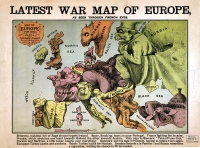Europe
From The Art and Popular Culture Encyclopedia
| Revision as of 10:12, 20 May 2024 Jahsonic (Talk | contribs) (→Tourism) ← Previous diff |
Revision as of 10:17, 20 May 2024 Jahsonic (Talk | contribs) Next diff → |
||
| Line 2: | Line 2: | ||
| {| class="toccolours" style="float: left; margin-left: 1em; margin-right: 2em; font-size: 85%; background:#c6dbf7; color:black; width:30em; max-width: 40%;" cellspacing="5" | {| class="toccolours" style="float: left; margin-left: 1em; margin-right: 2em; font-size: 85%; background:#c6dbf7; color:black; width:30em; max-width: 40%;" cellspacing="5" | ||
| | style="text-align: left;" | | | style="text-align: left;" | | ||
| + | |||
| + | "In [[political writer]]s, again, the result which is insisted on is the change in the organisation of [[European society]]. Before the [[Crusades]], Europe was covered with [[castle]]s; the family was the most real organisation manifest. After the Crusades, the family organisation, or, what is the same thing, [[feudal life]], is absorbed into [[national life]], and, instead of castles and barons, kingdoms and monarchs meet our view."--''[[Noble Traits of Kingly Men]]'' (1860) | ||
| + | <hr> | ||
| "The values of [[liberté, égalité, fraternité]], the rights of [[LGBT]]-people, the freedom of the press exemplified by [[Charlie Hebdo]], an aversion to [[Autocracy|autocratic]] leaders, have come to be seen as an integral part of [[Culture of Europe|European culture]]. Because of these, soft, [[Feminization (sociology)|feminine]] qualities, Europe is perceived as the [[Maria lactans]] of the world."--Sholem Stein | "The values of [[liberté, égalité, fraternité]], the rights of [[LGBT]]-people, the freedom of the press exemplified by [[Charlie Hebdo]], an aversion to [[Autocracy|autocratic]] leaders, have come to be seen as an integral part of [[Culture of Europe|European culture]]. Because of these, soft, [[Feminization (sociology)|feminine]] qualities, Europe is perceived as the [[Maria lactans]] of the world."--Sholem Stein | ||
| <hr> | <hr> | ||
Revision as of 10:17, 20 May 2024
|
"In political writers, again, the result which is insisted on is the change in the organisation of European society. Before the Crusades, Europe was covered with castles; the family was the most real organisation manifest. After the Crusades, the family organisation, or, what is the same thing, feudal life, is absorbed into national life, and, instead of castles and barons, kingdoms and monarchs meet our view."--Noble Traits of Kingly Men (1860) "The values of liberté, égalité, fraternité, the rights of LGBT-people, the freedom of the press exemplified by Charlie Hebdo, an aversion to autocratic leaders, have come to be seen as an integral part of European culture. Because of these, soft, feminine qualities, Europe is perceived as the Maria lactans of the world."--Sholem Stein "What’s heaven? Heaven is where the police are British, the chefs are French, the mechanics are German, the lovers are Italian and the bankers are Swiss. So then, what’s hell? Hell is where the police are German, the chefs are British, the mechanics are French, the lovers are Swiss and the organizers are Italian." [...] "There is a new political dividing line in Europe, at least as important as the old line between left and right. It splits existing parties and throws up new ones. It opens new fronts between nations as well as parties. On one side, there is the camp of Merkron (Merkel-Macron), on the other, that of Orbvini (Orbán-Salvini)." --Timothy Garton Ash [1], 9/7/2018 "Putain, putain, c'est vachement bien, nous sommes quand même tous des Européens."--"Putain putain" (1983) by TC Matic "Try to arrange your journey so as to reach Europe by the first of May. With a view to this, secure your steamship ticket very early in the year, and if your allowance for the trip is limited buy a return ticket. By so doing you may save yourself some anxiety as the end of your journey approaches."--The Complete Pocket-guide to Europe (1868) by Edmund Clarence Stedman "London? Paris? Berlin? Moscow? Bah! You pick: One name's as good as another. Don't take offence if already at the start of our journey, we meet a Seine which flows into the Thames, before joining the Tiber at the corner of a Madrid square. Besides, the idea of uniting the states of Europe, which the politicians believe they thought of first, was already inside us when on school desks, we were convinced that Zurich was the capital of Belgium and Warsaw of England. We were already trying to mix, despite the strict watch of our teachers, all of the peoples of Europe. Just one capital, one name, instead of the many learned by rote. Here is a dream which is realized every night, when day-to-day reality sleeps and imagination wakes instead."--opening voiceover panning over a Mini-Europe in Europe by Night (1959) |
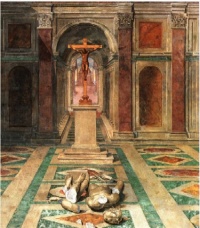
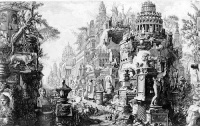
Illustration: Antichita Romanae (1748) by Piranesi
|
Related e |
|
Featured: |
Europe is one of the world's seven continents.
Europe, in particular Ancient Greece and Ancient Rome, is the birthplace of Western culture and high culture. It played a predominant role in global affairs from the 16th century onwards, especially after the beginning of colonialism. Between the 16th and 20th centuries, European nations controlled at various times the Americas, most of Africa, Oceania, and large portions of Asia. Both World Wars were largely focused upon Europe, greatly contributing to a decline in Western European dominance in world affairs by the mid-20th century as the United States and Soviet Union took prominence.
Contents |
Culture
- European culture, Dead white European males - Eurocentrism - European culture - continental philosophy
The culture of Europe might better be described as a series of multiple cultures, often competing; geographical regions opposing one another, Orthodoxy as opposed to Catholicism as opposed to Protestantism as opposed to Judaism as opposed to Secularism as opposed to Islam; many have claimed to identify cultural fault lines across the continent. There are many cultural innovations and movements, often at odds with each other, such as Christian proselytism or Humanism. Thus the question of "common culture" or "common values" is far more complex than it seems to be.
Upon the pagan cultures of aboriginal Europe, the foundations of modern European cultures were laid by the Greeks, strengthened by the Romans, stabilized by Christianity, added to by the rest of Europe, reformed and modernized by the fifteenth-century Renaissance and Reformation, and globalized by successive European empires between the sixteenth and twentieth centuries. Thus the European Culture developed into a very complex phenomenon of wider range of philosophy, Judeo-Christian and secular humanism, rational ways of life and logical thinking developed through a long age of change and formation with the experiments of enlightenment, naturalism, romanticism, science, democracy, fascism, communism, and socialism. Because of its global connection, the European culture grew with an all-inclusive urge to adopt, adapt and ultimately influence other trends of culture. As a matter of fact, therefore, from the middle of the nineteenth century with the expansion of European education and the spread of Christianity, European culture and way of life, to a great extent, turned into "global culture," if anything has to be so named.
By medium
European literature
European literature refers to the literature of Europe.
European literature includes literature in many languages; among the most important are English literature, Spanish literature, French literature, Polish literature, German literature, Italian literature, Greek literature, Latin literature, Russian literature. In colloquial speech, European literature often is used as a synonym for Western literature. European literature is a part of world literature.
European art
European art is the art of the European countries, and art created in the forms accepted by those countries.
European prehistoric art started as mobile rock, and cave painting art, and was characteristic of the period between the Paleolithic and the Iron Age.
Written histories of European art often begin with the art of the Ancient Middle East, and the Ancient Aegean civilisations, dating from the 3rd millennium BC. Parallel with these significant cultures, art of one form or another existed all over Europe, wherever there were people, leaving signs such as carvings, decorated artifacts and huge standing stones. However a consistent pattern of artistic development within Europe becomes clear only with the art of Ancient Greece, adopted and transformed by Rome and carried; with the Empire, across much of Europe, North Africa and the Middle East.
The influence of the art of the Classical period waxed and waned throughout the next two thousand years, seeming to slip into a distant memory in parts of the Medieval period, to re-emerge in the Renaissance, suffer a period of what some early art historians viewed as "decay" during the Baroque period, to reappear in a refined form in Neo-Classicism and to be reborn in Post-Modernism.
Before 1800s, the Christian church was a major influence upon European art, the commissions of the Church, architectural, painterly and sculptural, providing the major source of work for artists. The history of the Church was very much reflected in the history of art, during this period. In the same period of time there was renewed interest in heroes and heroines, tales of mythological gods and goddesses, great wars, and bizarre creatures which were not connected to religion.
Secularism has influenced European art since the Classical period, while most art of the last 200 years has been produced without reference to religion and often with no particular ideology at all. On the other hand, European art has often been influenced by politics of one kind or another, of the state, of the patron and of the artist.
European art is arranged into a number of stylistic periods, which, historically, overlap each other as different styles flourished in different areas. Broadly the periods are, Classical, Byzantine, Medieval, Gothic Renaissance, Baroque, Rococo, Neoclassical, Modern and Postmodern.
European music
The music of Europe includes a number of kinds of distinct genres of music, including traditional and modern folk, rock and alternative music, and some of the most widely-recognized classical styles in the world. Its variety reflects the variety of Europe in general, and individual countries and their regions may have very different styles of traditional or more modern music.
European cinema
The cinema of Europe has, compared to the cinema of the United States, the reputation of being more liberal when it comes to the representation of nudity and sexuality but less liberal when it comes to the depiction of violence. In the US, European cinema, like world cinema, is often shown in art house theatres.
Some notable European film movements include German Expressionism, Italian neorealism, French New Wave, Polish Film School, New German Cinema, Dogme 95, and Czechoslovak New Wave.
A key difference with American cinema is that its European counterpart is has traditionally been government funded, and is still so to a considerable degree.
Most articles on European cinema is focused on its "arthouse" cinematic merit rather than on its popular cinema.
Tourism
Tourism in Europe is an important contributor the European GNP. Tourist attractions include the Colloseum, Eiffel Tower and the Parthenon. European tourism arguably started with the Grand Tour. People mainly come to Europe for its rich art, cuisine, history, fashion and culture, its beautiful coastline and beaches, its mountains, and priceless ancient monuments, especially those from the Greek civilization and Roman civilization.
The first travel guide of Europe was Aymeric Picaud's Codex Calixtinus.
Culture II
The culture of Europe might better be described as a series of multiple cultures, often competing; geographical regions opposing one another, Orthodoxy as opposed to Catholicism as opposed to Protestantism as opposed to Judaism as opposed to Secularism as opposed to Islam; many have claimed to identify cultural fault lines across the continent. There are many cultural innovations and movements, often at odds with each other, such as Christian proselytism or Humanism. Thus the question of "common culture" or "common values" is far more complex than it seems to be.
Upon the pagan cultures of aboriginal Europe, the foundations of modern European cultures were laid by the Greeks, strengthened by the Romans, stabilized by Christianity, added to by the rest of Europe, reformed and modernized by the fifteenth-century Renaissance and Reformation, and globalized by successive European empires between the sixteenth and twentieth centuries. Thus the European Culture developed into a very complex phenomenon of wider range of philosophy, Judeo-Christian and secular humanism, rational ways of life and logical thinking developed through a long age of change and formation with the experiments of enlightenment, naturalism, romanticism, science, democracy, fascism, communism, and socialism. Because of its global connection, the European culture grew with an all-inclusive urge to adopt, adapt and ultimately influence other trends of culture. As a matter of fact, therefore, from the middle of the nineteenth century with the expansion of European education and the spread of Christianity, European culture and way of life, to a great extent, turned into "global culture," if anything has to be so named.
Common cultural heritage
European culture is largely rooted in what is often referred to as its "common cultural heritage". Due to the great number of perspectives which can be taken on the subject, it is impossible to form a single, all-embracing conception of European culture. Nonetheless, there are core elements which are generally agreed upon as forming the cultural foundation of modern Europe. One list of these elements given by K. Bochmann includes:
- A common cultural and spiritual heritage derived from Greco-Roman antiquity, Christianity, the Renaissance and its Humanism, the political thinking of the Enlightenment, and the French Revolution, and the developments of Modernity, including all types of socialism;
- A rich and dynamic material culture that has been extended to the other continents as the result of industrialization and colonialism during the "Great Divergence";
- A specific conception of the individual expressed by the existence of, and respect for, a legality that guarantees human rights and the liberty of the individual;
- A plurality of states with different political orders, which are condemned to live together in one way or another;
- Respect for peoples, states and nations outside Europe.
Berting says that these points fit with "Europe's most positive realisations".
The concept of European culture is generally linked to the classical definition of the Western world. In this definition, Western culture is the set of literary, scientific, political, artistic and philosophical principles which set it apart from other civilizations. Much of this set of traditions and knowledge is collected in the Western canon. The term has come to apply to countries whose history has been strongly marked by European immigration or settlement during the 18th and 19th centuries, such as the Americas, and Australasia, and is not restricted to Europe.
Art
The oldest known paintings are at the Grotte Chauvet in France, claimed by some historians to be about 32,000 years old. The history of Western painting represents a continuous, though disrupted, tradition from antiquity. Until the mid 19th century it was primarily concerned with representational and Classical modes of production, after which time more modern, abstract and conceptual forms gained favor. Developments in Western painting historically parallel those in Eastern painting, in general a few centuries later. African art, Islamic art, Indian art, Chinese art, and Japanese art each had significant influence on Western art, and, eventually, vice-versa.
The earliest European sculpture to date portrays a female form, and has been estimated at dating from 35,000 years ago. See Classical sculpture, Ancient Greek sculpture, Gothic art, Renaissance, Mannerist, Baroque, Neoclassicism, Modernism, Postminimalism, found art, Postmodern art, Conceptual art.
Europe was the birthplace of classical music- notably, Germany, France, Italy, and Russia. Important classical composers from Europe include Beethoven, Mozart, Bach, Haydn, and Vivaldi.
Europe has also imported many different genres of music, mainly from America, ranging from pop, rap, hip'hop, r'n'b, dance, jazz, soul etc. Britain has been most successful in re-exporting this type of music from the Beatles to Oasis; however, countries like Spain and Germany have not been far behind with artists such as Julio Iglesias and Kraftwerk.
The Eurovision Song Contest brings European states together every May, in which each country submits a song and an eventual winner is chosen at the end, through voting.
- European classical music : Europe was the birthplace of classical music- notably, Austria, Germany, France, Hungary, Italy, and Russia. Important classical composers from Europe include J.S. Bach, Handel, Vivaldi, Haydn, Mozart, Beethoven, Schubert, Schumann, Liszt, Chopin, Wagner, Rimsky-Korsakov, Bruckner, Tchaikovsky, Verdi, Mahler, Richard Strauss, Schoenberg, Bartok, Sibelius, Prokofiev, Puccini, Debussy, Rossini, Ravel, Stravinsky and Shostakovich. Luciano Pavarotti was a contemporary popular opera singer.
- European folk music : Europe has a wide and diverse range of indigenous music, sharing common features in rural, travelling or maritime communities. Folk music is embedded in an unwritten, aural tradition, but was increasingly transcribed from the nineteenth century onwards. Many classical composers used folk melodies, and folk has influenced some popular music in Europe.
- European popular music : Europe has also imported many different genres of music, mainly from America, ranging from Blues, Jazz, Soul, Pop, Rap, Hip-Hop, R'n'B, Dance, etc. UK has been most successful in re-exporting this type of music and creating many of its own genres with The Beatles, The Rolling Stones, Queen, Elton John, Pink Floyd, Led Zeppelin, David Bowie, Deep Purple, Sex Pistols, Eric Clapton, The Clash, Van Morrison, Dire Straits, Fleetwood Mac, Genesis, George Michael, Pet Shop Boys, Phil Collins, Rod Stewart, The Who, Eurythmics, Dusty Springfield, The Cure, Black Sabbath, Def Leppard, Duran Duran, Iron Maiden, Radiohead, Oasis, Coldplay, The Police, Robbie Williams, Bee Gees, Spice Girls, UB40, Amy Winehouse, Jay Sean, Leona Lewis... Other European popular musicians are U2 (Ireland), ABBA (Sweden), a-ha (Norway), Andrea Bocelli (Italy), Julio Iglesias (Spain), Nana Mouskouri (Greece/France), Boney M. (Germany), Charles Aznavour (France), Johnny Hallyday (France), Modern Talking (Germany), Scorpions (Germany), Rammstein (Germany) Ace of Base (Sweden), Enya (Ireland), James Last (Germany), Doda (Poland), Jean Michel Jarre (France), Roxette (Sweden)... The Eurovision Song Contest. Main festivals : Glastonbury (UK), Wacken (Germany), Benicassim (Spain), Roskilde (Denmark).
EMI is the largest European music company.
Neolithic architecture : Born in the Levant, Neolithic architecture spread to Europe. The Mediterranean neolithic cultures of Malta worshiped in megalithic temples. In Europe, long houses built from wattle and daub were constructed. Elaborate tombs for the dead were also built. These tombs are particularly numerous in Ireland, where there are many thousand still in existence. Neolithic people in the British Isles built long barrows and chamber tombs for their dead and causewayed camps, henges flint mines and cursus monuments., Architecture of ancient Greece, Roman architecture, Medieval architecture, Renaissance architecture, Baroque architecture, Beaux-Arts architecture, Expressionist architecture, Deconstructivism.
Europe is the birthplace of some of the most prominent or popular fiction writers of all time : Homer, Dante Alighieri, François Rabelais, Miguel de Cervantes, William Shakespeare, Charles Dickens, Geoffrey Chaucer, Voltaire, Jane Austen, Leo Tolstoy, Fyodor Dostoyevsky, H. G. Wells, Robert Louis Stevenson, C. S. Lewis, Franz Kafka, Agatha Christie, Henrik Ibsen, J. R. R. Tolkien, Rudyard Kipling, Antoine de Saint-Exupéry, Alexander Pushkin, Knut Hamsun, George Orwell, Jules Verne, Bram Stoker, James Joyce, Mary Shelley, Albert Camus, Oscar Wilde, Roald Dahl, Lewis Carroll, Virginia Woolf, Daniel Defoe, Anne Frank, John Milton, Umberto Eco, Walter Scott, Beatrix Potter, D. H. Lawrence, Hans Christian Andersen, Brothers Grimm, Joseph Conrad, Terry Pratchett, Jonathan Swift, J. M. Barrie, Alan Moore, Anton Chekhov, Patrick Süskind, J. K. Rowling, Sigrid Undset...
See Western art history, dance, drama, and circus arts.
In 1897, Georges Méliès established the first cinema studio on a rooftop property in Montreuil, near Paris. Some notable European film movements include German Expressionism, Italian neorealism, French New Wave, Polish Film School, New German Cinema, Portuguese Cinema Novo, Czechoslovak New Wave, Dogme 95, New French Extremity, and Romanian New Wave. The cinema of Europe has its own awards, the European Film Awards. Main festivals : Cannes Film Festival (France), Berlin International Film Festival (Germany). The Venice Film Festival (Italy) or Mostra Internazionale d'Arte Cinematografica di Venezia, is the oldest film festival in the world.
Some of the most popular games of all time come from Europe : the Grand Theft Auto (series), Tomb Raider, Cossacks: European Wars, Brain Challenge, Block Breaker Deluxe...
Science
Europe has produced some of the greatest scientists, inventors and intellectuals in history. Germany; Albert Einstein, Johannes Kepler, Johannes Gutenberg, Gottfried Leibniz, Daniel Gabriel Fahrenheit, Max Planck, Karl Benz. England; Isaac Newton, Charles Darwin, Michael Faraday, James Joule, Edward Jenner, John Dalton, George Stephenson, Florence Nightingale, George Cayley, Frank Whittle, Alan Turing, Stephen Hawking, Tim Berners Lee. Scotland; James Watt, Alexander Fleming, Alexander Graham Bell, John Logie Baird, James Clerk Maxwell, Adam Smith. Italy; Leonardo da Vinci, Michelangelo, Galileo Galilei, Niccolò Machiavelli, Alessandro Volta, Guglielmo Marconi, Enrico Fermi. France; Louis Pasteur, Antoine Lavoisier, Henri Becquerel, René Descartes. Poland; Nicolaus Copernicus, Marie Curie. Ireland; Lord Kelvin. Sweden; Alfred Nobel, Anders Celsius. Denmark; Niels Bohr. Serbia; Nikola Tesla. Switzerland; Carl Jung. Hungary; Leo Szilard. Russia; Dmitri Mendeleev. Austria: Sigmund Frued.
Philosophy
European philosophy is a predominant strand of philosophy globally, and is central to philosophical enquiry in America and most other parts of the world which have fallen under its influence. Christian thought is a huge influence on many fields of European philosophy (as European philosophy has been on Christian thought too), sometimes as a reaction; the Greek schools of philosophy in antiquity provide the basis of philosophical discourse that extends to today.
Perhaps one of the most important single philosophical periods since the classical era were the Renaissance, the Age of Reason and the Age of Enlightenment. There are many disputes as to its value and even its timescale. What is indisputable is that the tenets of reason and rational discourse owe much to René Descartes, John Locke and others working at the time.
Other important European philosophical strands include: Analytic philosophy, Calvinism, Christian Democracy, Communism, Conservatism, Constructionism, Deconstructionism, Empiricism, Epicureanism, Existentialism, Fascism, Humanism, Idealism, Liberalism, Logical positivism, Marxism, Materialism, Monarchism, Nationalism, Perspectivism, Platonism, Positivism, Postmodernism, Rationalism, Romanticism, Scepticism, Scholasticism, Social Democracy, Socialism, Stoicism, Structuralism, Thomism, Utilitarianism, Spenglerism
Religion
Christianity has been the dominant feature in shaping up European culture for at least the last 1700 years. Modern philosophical thought has very much been influenced by Christian philosophers such as St Thomas Aquinas and Erasmus.
Cuisine
The cuisines of Western countries are diverse by themselves, although there are common characteristics that distinguishes Western cooking from cuisines of Asian countries and others. Compared with traditional cooking of Asian countries, for example, meat is more prominent and substantial in serving-size. Steak in particular is a common dish across the West. Similarly to some Asian cuisines, Western cuisines also put substantial emphasis on sauces as condiments, seasonings, or accompaniments (in part due to the difficulty of seasonings penetrating the often larger pieces of meat used in Western cooking). Many dairy products are utilized in the cooking process, except in nouvelle cuisine. Wheat-flour bread has long been the most common sources of starch in this cuisine, along with pasta, dumplings and pastries, although the potato has become a major starch plant in the diet of Europeans and their diaspora since the European colonization of the Americas.
Clothing
The earliest definite examples of needles originate from the Solutrean culture, which existed in France from 19,000 BC to 15,000 BC. The earliest dyed flax fibers have been found in a cave the Republic of Georgia and date back to 36,000 BP. see Clothing in ancient Rome, 1100-1200 in fashion, 1200-1300 in fashion, 1300-1400 in fashion, 1400-1500 in fashion, 1500-1550 in fashion, 1550-1600 in fashion, 1600-1650 in fashion, 1650-1700 in fashion, Textile manufacture during the Industrial Revolution.
Sport
See Olympic games
European Capital of Culture
Each year since 1985 one or more cities across Europe are chosen as European Capital of Culture.
Symbols
- See also
- Western culture
- European tourism
- Europalia
- Europeanisation
- Romano-Germanic culture
- Westernization
- European art
- European film
- European erotica
- European low culture
- European counterculture
- European Capital of Culture
- European cuisine
- Europeanisation
- Westernization
- Battles of macrohistorical importance involving invasions of Europe
- Europalia
- Romano-Germanic culture
See also
- European identity
- European migrant crisis
- European low culture
- European tourism
- European stereotypes
- European Civil War
- United States of Europe
- Powder keg of Europe
- A French satirical cartoon map of Europe in 1870
- Weird Europe (1999) is a travel guide to Europe by Kristan Lawson, Anneli Rufus.
- Fortress Europe
- Witch


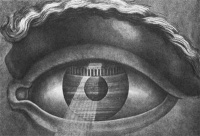
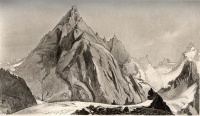
_-_B._Bellotto.jpg)
